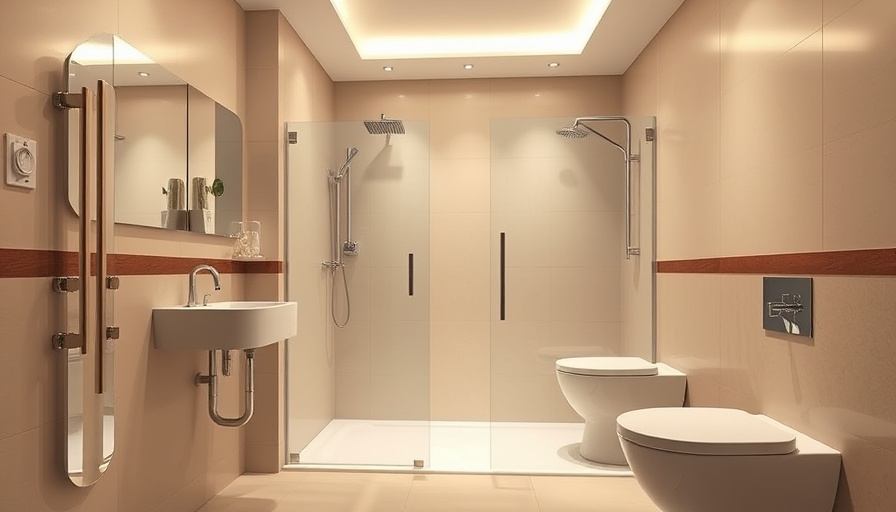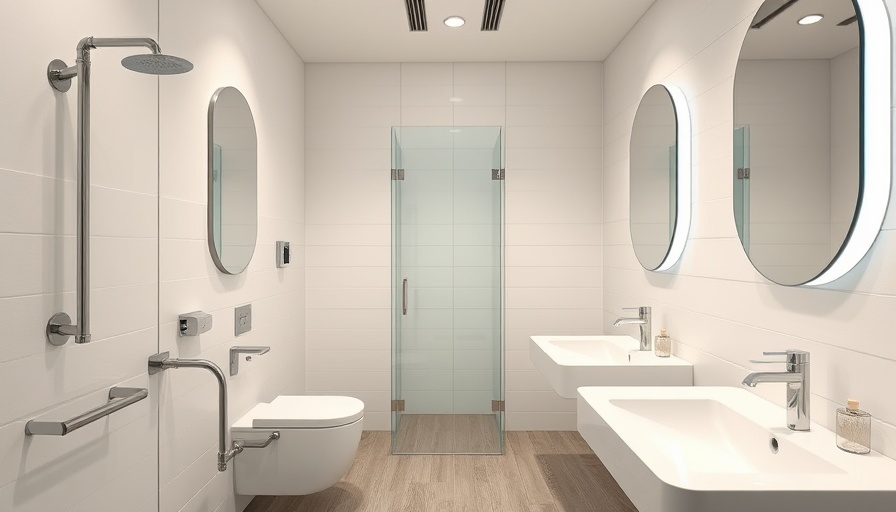
Understanding the Importance of Choosing the Right Tub
As you contemplate enhancing your home’s bathroom experience, one of the most vital decisions revolves around selecting the right bathtub. The choice between a walk-in tub and a traditional tub may seem straightforward, but an informed decision can greatly influence safety and comfort in your daily life. This comprehensive guide will delve into the distinctions, benefits, and essential considerations of walk-in versus traditional tubs, equipping you to make the best choice for your unique lifestyle.
Walk-In Tubs: A Commitment to Safety and Accessibility
Walk-in tubs symbolize a necessary evolution in home bathing solutions, specifically designed with safety and accessibility in mind. Their low-entry threshold allows individuals to step directly into the tub, removing the need to climb over high rims—a feature particularly beneficial for elderly individuals or those with mobility issues. Equipped with safety grab bars, slip-resistant flooring, and built-in seating, walk-in tubs provide users with the confidence needed while bathing without the risk of falls.
Another significant advantage of walk-in tubs lies in their ergonomic design. These tubs often come equipped with features like hydrotherapy jets, fostering not just relaxation, but also relief for individuals suffering from pain conditions like arthritis. Thus, for those prioritizing comfort and therapeutic benefits, walk-in tubs present an optimal solution.
The Enduring Appeal of Traditional Tubs
Conversely, traditional tubs maintain their appeal with timeless elegance and versatility. Available in a variety of styles—from freestanding clawfoot tubs to built-in alcove designs—they can enhance the aesthetic appeal of any bathroom, often serving as a stunning centerpiece. Many homeowners find that traditional tubs add value to their homes while providing a luxurious bathing experience.
In terms of usage, traditional tubs afford users a spacious bathing experience, allowing for long, soothing soaks. This immersion in warm water is far more accommodating for families or those who enjoy sharing a bath experience. Additionally, traditional tubs typically pose fewer installation and maintenance challenges, making them a practical option for homeowners focused on minimizing costs and maximizing aesthetic beauty.
Key Distinctions: Walk-In vs. Traditional Tubs
The differences between walk-in and traditional tubs are more than just superficial. Walk-in tubs prioritize safety and accessibility, making them an ideal solution for aging-in-place considerations. For families with young children or for individuals interested in long-term independence, walk-in tubs represent a straightforward and secure choice.
Traditional tubs, however, cater to those seeking a broader bathing experience. They offer more space for full-body immersion, which can be particularly appealing after a long day. Conversely, walk-in tubs tend to be more compact in design, focusing on function over flair.
Installation Insights for Walk-In and Traditional Tubs
Understanding installation considerations is critical when selecting between walk-in and traditional tubs. Walk-in tubs often pose more complex challenges, necessitating professional installation to address plumbing modifications and potentially solid structural changes. This complexity can translate into increased costs, warranting careful reflection on the overall budget.
In contrast, traditional tubs generally allow for easier and more rapid installation, making them a streamlined choice for those looking to enhance their bathroom without embarking on extensive renovations.
Future Considerations: The Growing Demand for Safe Bathroom Solutions
As the demographic landscape shifts, the demand for accessible bathroom solutions is expected to surge, significantly influencing the bathtub market. With an increasing number of seniors preferring to age in place, the features synonymous with walk-in tubs, such as ease of use and safety, are likely to gain importance.
This trend indicates a need for manufacturers to innovate, ensuring tubs cater to comfort while enhancing safety features and aesthetic appeal—its outcomes relevant considering many homeowners desire both beauty and functionality in their bathrooms.
Making the Informed Choice
Ultimately, the decision between a walk-in and a traditional tub should be tailored to your unique preferences, safety requirements, and overall lifestyle. Evaluating factors such as installation cost, aesthetic preferences, and potential long-term health benefits can vastly influence your final choice. Investing the time to explore each option thoroughly ensures that the tub you select will provide both comfort and peace of mind for many years to come.
Whether you lean towards the practicality and safety of a walk-in tub or the timeless appeal of a traditional tub, understanding your options allows for a decision that enhances your home and daily well-being. Educating yourself on the differences can significantly aid in navigating this important home improvement choice.
 Add Row
Add Row  Add
Add 




Write A Comment